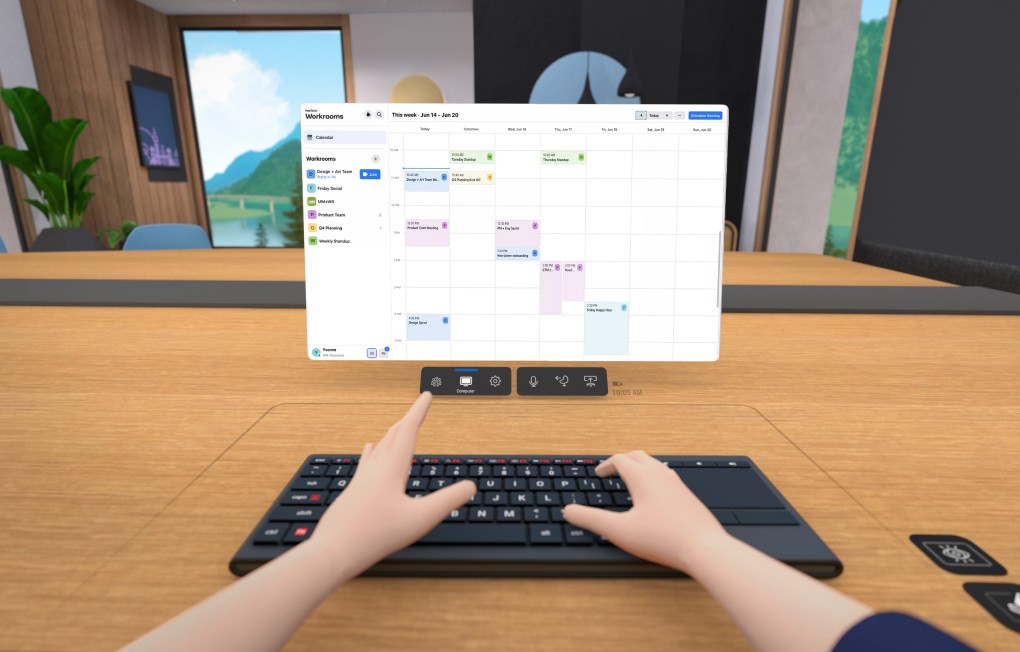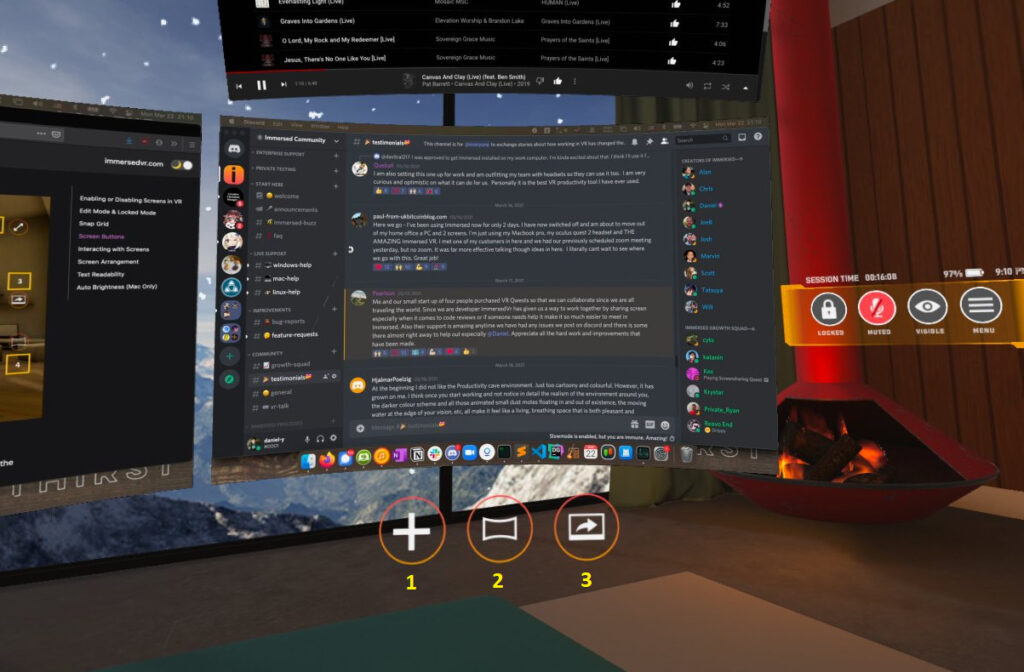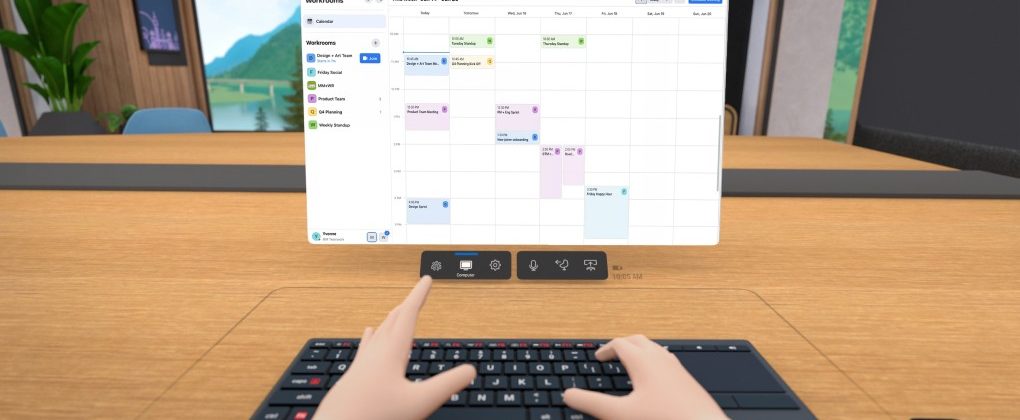I sat at my desk, with a Meta Quest 2 headset covering my eyes, looking like a bit of an idiot to my housemate. I’d just finished a work meeting where myself and two other colleagues had attempted to hold our weekly catch up, this time in a virtual space. At one point one of my teammates sat alone at his virtual desk, while we others couldn’t sign into the room. We could only view through our PC browsers.
We tried everything possible, including letting others host the room. There always seemed to be something holding us back and after twenty minutes of trying to connect, we gave up and promised to try different software next time.
Feeling a little deflated that our metaverse jaunt had fallen flat, I kept my headset on. I felt around in front of me for my laptop keyboard. I could physically see it, as I was logged into Horizon Workrooms and I’d paired my MacBook with the software, but I’m a useless touch typist and I couldn’t easily find my way to writing. So instead I decided to use my time for research.
I was sitting in a virtual space – an office that screamed Silicon Valley – and I’d just enlarged my virtual laptop screen to read an article for research. The replication of my MacBook was great, there was little to no delay between my clicking a Google Chrome tab and it happening on my headset. I’d lined up several pieces to read, grabbed my headphones and got started.
‘Outside’ my office the sky was Pixar blue, the neighbouring buildings looked like somewhere everyone travelled on Segways or motorised scooters. My virtual desk was large and free of the junk that clutters my real desk; behind me stood a large whiteboard on which I could cast things, or draw pictures if my team members ever actually got into my online workspace without connection issues.

I turned off notifications, opened my music app and selected an ambient playlist that mimicked the sounds outside a suburban home. I began reading faster than normal, absorbing each detail without my incessant need to re-read. I wasn’t losing focus or being distracted by my phone or a message from the work Discord.
After I’d reached the end of each article I sat back in my chair and looked around the ‘room’. It was such a clean space. Maybe a little sterile. A button in front of me changed the environment, so I selected a log cabin office. It didn’t beat the real world, but it stole me away from my hallway office at home where I have no windows, and transported me a little.
I’d fully expected this virtual working environment to be jarring or prohibitive in some way. Even the hand tracking that the Quest 2 was doing made life easier. There was no need to use the controllers, I was pinching my fingers together to select options or return to menus. It all felt oddly second nature, and a little Minority Report, minus the dystopia.
It was clear to me that reducing the number of distractions was allowing me more focus in my workday. Then things got a bit silly. I jumped from the Horizon Workrooms, which felt very corporate, over to Immersed. With Immersed, I got a great introduction and tutorial to set up my laptop, and I found myself with a similar setup to Workrooms. Except this time I was on a space station, or in a fantastical glowing world, or a living room which seemed Patrick Bateman’s cup of tea.

The major difference here, which I loved, was the ability to increase the screen size so it emulated a cinema screen. Reading now felt even more comfortable, and somewhat immersive. I reclined slightly in my chair and let the screen almost wrap around my vision, shrinking my visual focus onto just the text. Of course, five minutes later I decided to watch The Batman trailer on YouTube and that was an equally great experience, in my own personal cinema.
I was still doing the same things I’d do for portions of my workday – just reading – but everything which usually surrounds that was blocked out almost completely. If typing was tough for me in workrooms, however, then it was impossible in Immersed. There was no representation of my laptop keyboard and so I began skewing my head to peek out of the gap between my nose and the headset.
I could never fully shift my workaday life to one of these apps, but for concentrated reading, it felt like a wonder. I have an unfortunate quirk with my OCD (Obsessional Compulsive Disorder) which forces me to re-read sentences repeatedly and now that was gone. Not only that, but I retained the information after closing down my laptop and removing the headset.
I’m still a way from sitting in a virtual office with my colleagues, but I think I’d even be happy with that; being able to collaborate in real-time with those who live across the world, or simply look up and ask a question, breaking away from my work-from-home lifestyle. But even if those things never happen, I’m happy that I’ve found a new way to focus on the white papers and articles which build out my day.
This article was originally published on vrfocus.com

